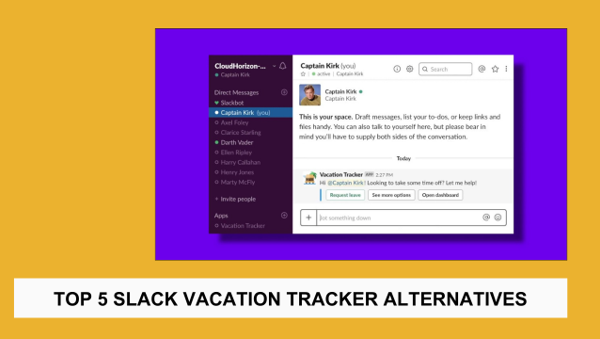As an HR professional, you may have noticed employees taking leaves for health issues as a fracture or when dealing with pregnancy or mental health episodes. It is often the case that employees are unaware of the benefits they are entitled to. Hence, you must inform employees of the coverage they will receive in the likelihood of such events. Therefore, a good starting point is to understand short term disability, its duration, and how it works. This article will also briefly talk about long term disability.
What Is a Short Term Disability?
A short term disability is an insurance benefit that compensates employees for injuries or illnesses that are not work-related. Injuries that occur on the job are not covered under it and instead come under workers’ compensation coverage.
It is important to note that an employee’s illness cannot be covered by both short term disability insurance and workers’ compensation at the same time.
How Long Is Short Term Disability?
As per the service provider, the short term disability benefits may vary but in general, the policy provides benefits for three to six months. However, if an employee doesn’t recover by the end of six months and needs additional time off, then long term disability benefits may have to come into play to continue extending the benefits.
How Does Short Term Disability Work?
Short term disability benefits both the employee and the employer. When an employee is struck by a qualifying event, they can file a claim with an insurance company to get the amount mentioned in the benefits. This amount helps employees take care of their routine expenses and save them from coming under financial hardship when they are unable to work.
Likewise, an employer also benefits from short term disability. The policy allows the employer to retain its valuable employees and save any additional cost. Wondering how?
Disability benefits are provided by the insurance company and not the employer. That means an employer can hire a temporary replacement without having to incur additional expenses. Moreover, the policy covering an employee ensures that they can remain financially stable while battling the illness and return to work. This way the employers can retain their high-performing, valuable employees.
What Qualifies for Short Term Disability?
A short term disability covers events or illnesses that happen outside the workplace. Medical conditions that prevent an employee from working for several weeks or months, confirmed by a medical professional are covered under it. These conditions include:
- Pregnancy
- Childbirth
- Mental illnesses
- Surgery rehabilitation or any other illness or injury that makes it difficult for an employee to work at their usual pace.
When Does Short Term Disability Kick In?
Once an employee files a claim, they have to wait for a short period around 14 days, also called the elimination period, before the employee can actually start receiving the benefits. The waiting period may vary as specified in the form. An employee must present a medical form signed by their medical practitioner detailing the injury or illness. The form asks to specify the date on which the health condition occurred as it is the date that marks the beginning of the elimination period.
Is Short Term Disability Taxable?
A short term disability may or may not be taxable depending on whether you paid the premiums or not. According to the IRS, it is a sick leave that will only be taxed if an employer paid the premiums partly or in full. Below is a breakdown of when it is taxable:
- When an employer pays 100% of an employee’s premium, then their short term disability income is taxable
- If the employer and employee decide to split the premium into 50/50 where the employee pays their portion of the premium with after-tax dollars, not paycheck deductions, then half of the income is taxable
When Is Short Term Disability Not Taxable?
The short term disability is not taxable in the following situation:
- If an employee pays all the premium with after-tax dollars, the benefits are not taxable
- If an employee receives benefits from a policy for which they paid themselves, then the benefits are not taxable.
How Is Short Term Disability Taxed?
An example here will make the concept more clear.
Let’s say an employee earns $9000 as short term disability benefits for a period of over six months and the employer and employee decide to split the premium in half. The employee pays half of it through pre-tax withholdings from paycheck as a result of which the entire amount of $9000 becomes taxable.
How much an employee pays taxes on benefits depends on the income earned from all sources. Employees pay taxes according to the tax bracket their overall income falls in. Below is a table for better understanding:
| Total Income | Tax Brackets |
| Up to $9,950 | 10% |
| $9,951-$40,525 | 12% |
| $40,526-$86,375 | 22% |
| $86376-$164,925 | 24% |
| $164,926-209,425 | 32% |
| $209,426-$523,599 | 35% |
| $526,000 and above | 37% |
How to Get Short Term Disability Benefits While Pregnant?
It is important to apply for short term disability benefits for the period of pregnancy way before an employee becomes pregnant. This is because it gives them some time to foresee and plan accordingly. It can be obtained in four ways:
- The employer makes and administers the plan
- Some employers offer an optional plan to employees that are administered by a third party. In such cases, employers may also agree to pay a portion of the payment
- Employees can buy their own insurance policy
- Depending upon the state an employee lives in, short term disability law may cover them. In this case, the employer doesn’t have to cover you with any plan
Why Is It Important to Apply for Short Term Disability for Parental Leave?
According to FMLA, employees who have worked for more than a year with a company receive up to 12 weeks of unpaid leave. This works for families that can afford to go on leave without any source of income. However, this can take a toll on families who don’t have the means. For them to enjoy some time off with their newborns and recover from postpartum, applying for parental leave under short term disability is a smart choice.
What does short term disability cover during pregnancy?
This policy covers time off taken during pregnancy and childbirth. It pays part of the income that helps employees recover from pregnancy complications, childbirth, and postpartum
An employee is required to buy their own insurance policy unless they fall in one of the two categories:
- Their employer provides a comprehensive insurance policy
- They live in a state that provides benefits
Duration of Short-Term Disability Coverage
It is always a good idea to research thoroughly before buying any short term disability policy. Employees should know what exactly will be covered and for how long.
For instance, if an employee is on bed rest three months before giving birth, then will the policy cover that time period? What benefits will an employee receive to be able to heal post-normal or C-section delivery?
The general idea is that most of the policies cover for 6 weeks in case of normal delivery and for eight weeks in case of a c-section.
In cases where an employee goes through severe complications during childbirth or is facing postpartum disorder, the benefits may be extended. In such a situation, the employee needs a note from their doctor stating the importance of staying home or at the hospital.
Long Term Disability vs Short Term Disability
The main difference between short and long term disability is that of the duration. It occurs when an employee is unable to return to work for more than six months. It is a plan that comes into play when short term disability benefits and sick leaves are exhausted. Its insurance covers employees until they return to work, are no longer disabled in any way, or reach retirement age. Some life events that it covers are:
- Cancer
- Cardiovascular diseases
- back pain or osteoarthritis
- Mental illnesses
Short Term Disability Benefits in the Different States
It is important to bear in mind that social security or the federal government does not grant short term disability benefits.
A few states offer programs that grant employees paid benefits. However, the state may differ on how much they pay and for what duration.
In the USA, only a few states offer such programs as below:
California
- California has a program that pays benefits for up to a year
- Employees are only eligible if they earned $300 in the previous year
- Benefits total 55% of the employee’s normal wages
- In case an employee is not able to return to work, the duration of benefits can be extended
New Jersey
- New Jersey’s temporary disability program provides up to 26 weeks of paid benefits
- The benefits make up to around two-thirds of the employee’s salary
New York
- New York has a disability benefits law that requires employers to provide employees with short term disability benefits.
- Employees get 50% of their wages as paid benefits
- Employees receive benefits for up to 26 weeks
- To receive the benefits, the employee must have worked for at least 4 weeks with the employer
Rhode Island
- Like California and New Jersey, Rhode Island also has a disability program that gives up to 30 weeks of paid benefits.
Hawaii
- In Hawaii, employees receive benefits for up to 26 weeks.
- Only those employees who have worked for over 14 weeks with their employer are eligible for the benefits
- Employers should have paid at least $400 per week to their employees for them to qualify
- The benefit sum up to 58% of the wages
Does Short Term Disability Guarantee Job Protection?
Unlike leaves taken under the Family and Medical Leave Act (FMLA), the short term disability doesn’t guarantee job protection. It comes as a surprise to employees that they can be legally fired from their jobs while going through this period.
However, there are some exceptions. According to the Americans Disability Act (ADA), employees who meet the definition of disability as per the ADA receive short term disability benefits. It is a challenge for companies covered under ADA to fire employees due to any disability.
An employer should try their best to make any accommodations before terminating any employee.
The business must also work with employees to work their way through any adjustments that enable an employee to resume work or fulfill the essential functions of their role. However, if nothing works out, then the employer can terminate an employee.
What Should Employees Expect Once They Return to Work After a Short Term Disability?
It is important to keep in mind that returning to work after some time off may be different. Employees may go through emotional and mental fatigue since they haven’t been used to working for long hours.
To be able to work at your usual pace takes some time. Moreover, the business may have implemented some changes such as hiring new employees, laid off some, or starting a new department altogether. An employee upon returning to work has to go adjust to all the new changes. However, they can do so at their own pace.






